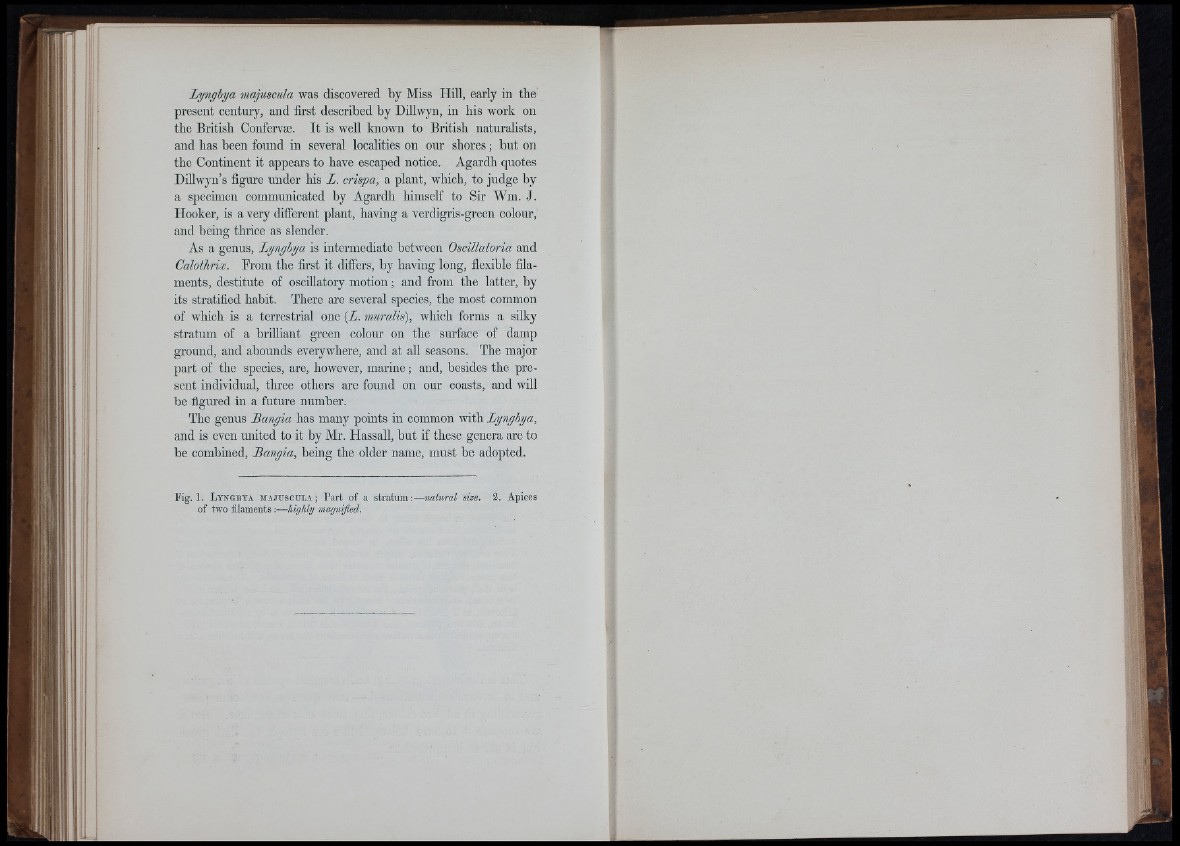
fy'
Lyngbya majuscula was discovered by Miss Hill, early in the
present century, and first described by Dillwyn, in his work on
the British Confervae. It is well known to British naturalists,
and has been found in several localities on our shores; bnt on
the Continent it appears to have escaped notice. Agardh quotes
DiUwyn’s figure under his L. crispa, a plant, which, to judge by
a specimen communicated by Agardh himself to Sir Wm. J.
Hooker, is a very diiferent plant, having a verdigris-green colour,
and being thrice as slender.
As a genus, Lyngbya is intermediate between Oscillatoria and
Calothrix. From the first it diifers, by having long, flexible filaments,
destitute of oscillatory motion; and from the latter, by
its stratified habit. There are several species, the most common
of which is a terrestrial one [L. muralis), which forms a silky
stratum of a brilliant green colour on the siu'face of damp
ground, and abounds everywhere, and at all seasons. The major
part of the species, are, however, marine; and, besides the present
individual, three others are found on our coasts, and will
he figured in a future number.
The genus Bangia has many points in common with Lyngbya,
and is even united to it by Mr. Hassall, but if these genera are to
be combined, Bangia, being the older name, must be adopted.
Hg. 1. Lyn&bxa MAJUSCULA; Part of a stratum:— natural size, 2. Apices
of two filaments :— highly magnified.